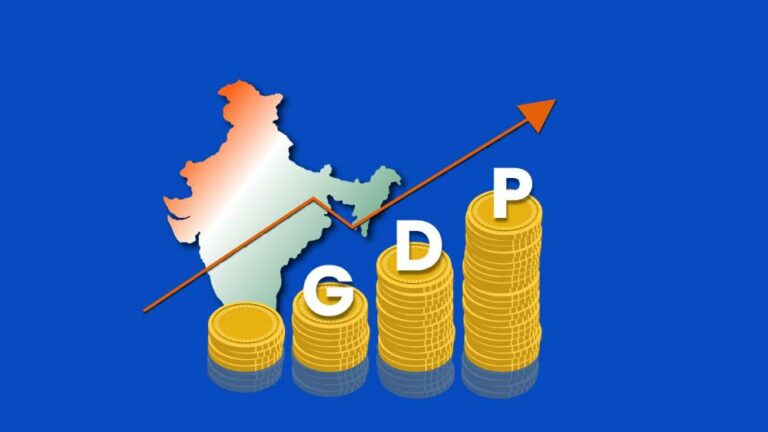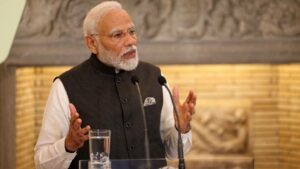Global rating agency Moody’s Investors Service has raised India’s 2024 GDP growth estimate to 6.8 per cent from November 2023 forecast of 6.1 per cent and also said it sees India’s GDP growth at 6.4 per cent in 2025 from earlier forecast of 6.3 per cent. Moody’s said in its report that India’s real GDP expanded 8.4 per cent year-over-year in the fourth quarter of calendar year 2023, resulting in 7.7 per cent growth for full-year 2023 and “we believe that with global headwinds fading, the Indian economy should be able to comfortably register 6-7 per cent real GDP growth and we therefore forecast around 6.8 per cent growth in calendar year 2024, followed by 6.4 per cent in 2025.”
In fact, many agencies feel the same way firmly stressing that capital spending by the government and strong manufacturing activity have meaningfully contributed to the robust growth outcomes in 2023. Since the outcome of the election is almost clear, no doubt, policy continuity is assured after the general election. The huge allocation being announced by the government even at the end of its tenure is another plus point assuring the continued focus on infrastructure development.
On the inflation front – headline inflation in January eased to 5.1 per cent from 5.7 per cent in the month prior. Core inflation also moderated to 3.5 per cent, down from 3.8 per cent in December. The RBI held the repo rate steady at 6.5 per cent in February, the same level since March 2023. In its February update of the Global Macro Outlook 2024-25; Moody’s said, it sees India’s retail inflation at 5.2 per cent in 2024 and 4.8 per cent in 2025.
While GDP exceeded expectations in the third quarter with 8.4 per cent growth from 8.1 per cent in the second quarter, a CRISIL report said that after a strong GDP in the past three fiscals, it is expected to moderate in the next fiscal year. The Statistics Ministry’s second advance estimates indicate fiscal 2024 GDP growth of 7.6 per cent, surpassing the initial estimate of 7.3 per cent released before the Union Budget in January. Another growth revision for this year will be done in May with the availability of Q4 numbers.
On the savings front – according to the details released by the government Fiscal 2023 saw gross domestic savings fall to 30.2 per cent of GDP compared with 31.2 per cent previous year. Household savings reduced to 18.4 per cent of GDP in fiscal 2023 from 20.1 per cent previous year, as their consumption normalised. Private corporate savings remains stable at 11.2 per cent of GDP. Encouragingly, foreign funding increased last fiscal, accounting for 6.1 per cent of gross capital formation compared with 3.7 per cent previous year.
While overall GDP accelerated to 8.4 per cent in the third quarter, GVA growth moderated to 6.5 per cent from 7.7 per cent. The upswing in the economic growth was mostly on the back of good performance by the sectors such as construction, mining & quarrying and manufacturing.
Manufacturing saw the highest growth at 11.6 per cent on-year in the third quarter, albeit some moderation from the 14.4 per cent previous quarter. Construction GVA, meanwhile, grew at a healthy pace despite some moderation (9.5 per cent vs 13.5 per cent) and was supported by continued government capital expenditure in infrastructure. Services growth also picked up at 7.0 per cent as against 6.0 per cent. In the services sector, Trade, Hotels, Transport and Communication picked up to 6.7 per cent in Q3 spurred by the festive season. Financial, real estate and professional services also picked up to 7.0 per cent from 6.2 per cent. On the other hand, private consumption growth remained weaker at 3.5 per cent YoY in 3QFY24 vs. 1.8 per cent/ 2.4 per cent in 3QFY23/2QFY24. At the same time, government consumption contracted 3.2 per cent in 3QFY24 vs. +7.1 per cent in 3QFY23.
Robust credit growth, rising capacity utilisation, and upbeat business sentiment – all these point to an improving outlook. Robust GST collections, rising auto sales and consumer optimism suggest urban consumption demand remains resilient. Chris Wood, global head of equity strategy at Jefferies, has aptly summarized all the above facts and figures when he said that investors must pay more attention to the stocks of Indian PSUs, citing Prime Minister Narendra Modi-government’s focus on value creation. These public sector company stocks are the ‘cheaper part of the Indian market’, and the government focus remains on privatization.




















